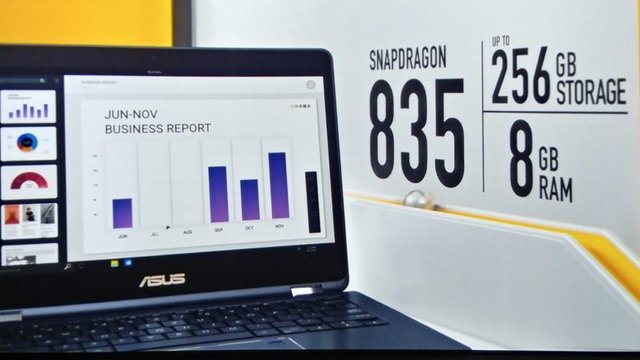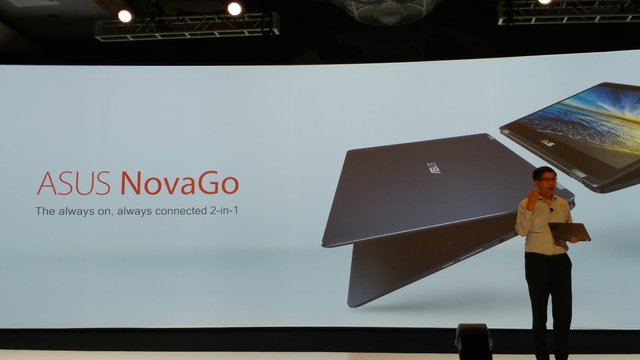The Always Connected PC -- Leave Your Power Cord Home

At the Qualcomm Snapdragon Technology Summit in Hawaii, Microsoft and Qualcomm jointly announced the introduction of the Always-Connected PC, or AC-PC for short. They were joined by ASUS announcing the NovaGo, HP announcing the Envy X2, and Lenovo with an announcement of a new AC-PC to be made in January at CES. ASUS was the only OEM to announce pricing – a 64GB/4GB storage/memory configuration for $599 and a 256GB/8GB configuration for $799. The “Always Connected PC” is a term coined by Microsoft and Qualcomm to essentially represent a Windows PC using an Arm-based smartphone SoC, the Snapdragon 835, instead of an x86 processor from AMD or Intel. The advantages of such a PC are longer battery life by using a low-power processor that offers performance comparable to low- to mid-range traditional x86 processor and connectivity anywhere with an integrated cellular modem plus wi-fi.

TIRIAS Research
ASUS CEO Jerry Shen introduces the NovaGo Always Connected PC at the Qualcomm Snapdragon Technology Summit
The concept of the AC- PC is not new. In 2012, Microsoft launched the Surface RT using an Arm-based processor from NVIDIA running a custom version of Windows called Windows RT. Unfortunately, the inability to run legacy PC Windows applications doomed the project from the start. This time around, the AC-PCs are using the latest and full version of Windows. The AC-PCs will ship with Windows 10S but also offer a free upgrade to Windows Pro if the consumer desires. To run legacy x86 applications, Microsoft has emulation software that runs 32-bit Windows applications on an Arm SoC. While running an emulated version of the software will slow performance, Microsoft is caching the translated software the first time it is run and uses other software optimizations to reduce the performance impact. Apparently, most of this is incorporated into Windows 10S, not Windows Pro. However, it is important to note that Windows 10S is just the latest version of Windows 10, not a completely custom version like Windows RT. Microsoft even went so far as to indicate that some applications may see higher performance under certain conditions because the Arm-based Snapdragon processor will not face the thermal limitations of traditional x86 PC processors. As a result, Microsoft positioned the AC-PC for everyone from consumers to enterprise users. The PC OEMs, however, are positioning the platform more for consumers and creators.
Hi! I am a robot. I just upvoted you! I found similar content that readers might be interested in:
https://www.forbes.com/sites/tiriasresearch/2017/12/06/the-always-connected-pc-leave-your-power-cord-home/
I recently have come across the amazing world of IOT.
it's stunning how technology makes us better and improves the way of life, for example, what is the longest life of a modem? so in recent research I see that if usingLow Power Chipset I think it can not just last longer and increase the life of your mobile phone but make the phone cost more profitible.